On 3 February 2004, Singapore Airlines made commercial aviation history with the departure of SQ20 from Singapore to Los Angeles, which at 14,100 kilometers and 14h 42mins became the longest non-stop commercial flight in the world at the time.
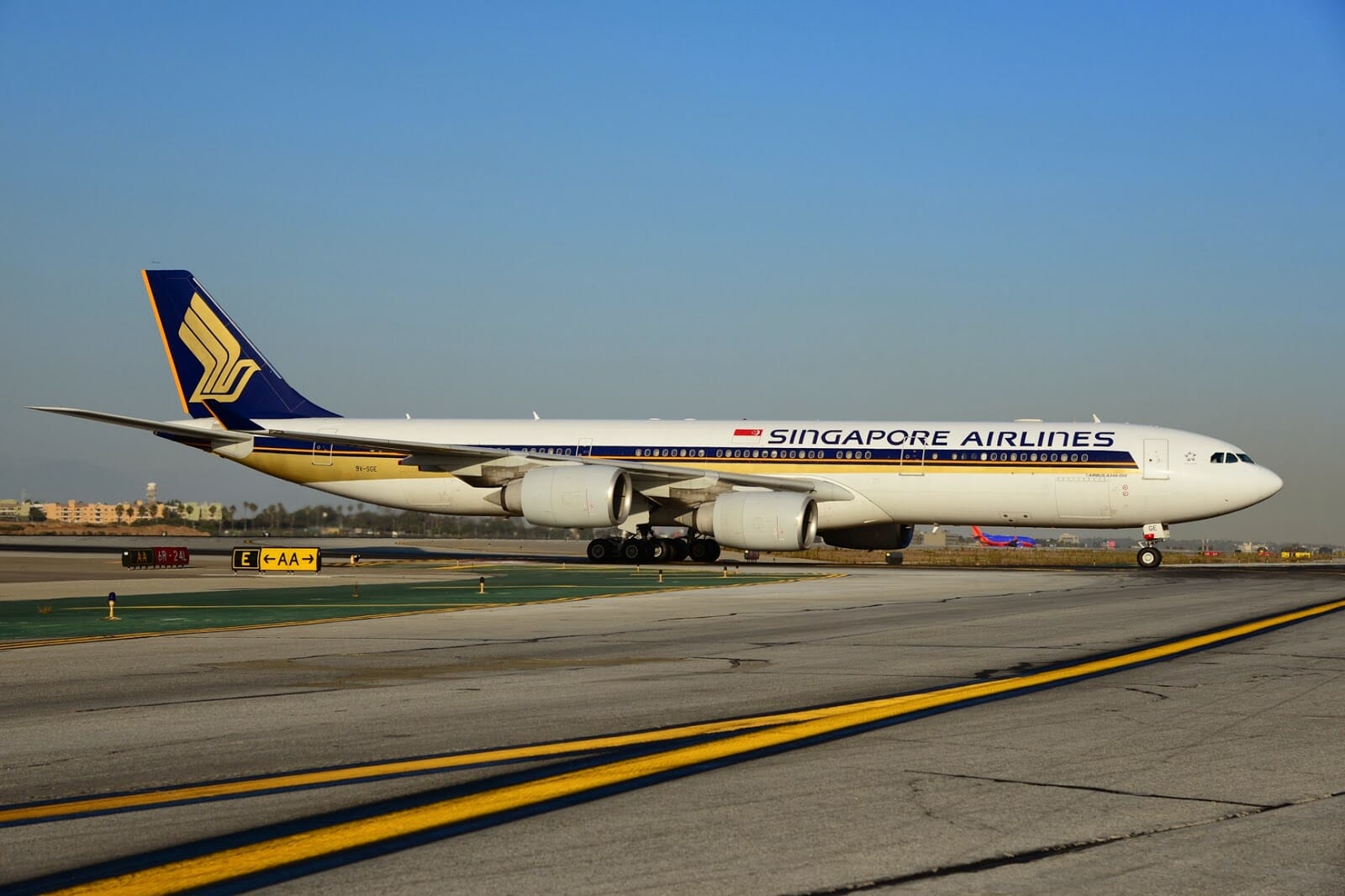
This flight was operated by an Airbus A340-500 (dubbed the “A345LeaderShip”‘; only SIA could coin names that sounded like they were dreamed up in a boardroom!), which carried a total of 181 passengers.
Up front were 64 Business Class seats, known as Raffles Class back in the day. These were the Barney-purple SpaceBeds previously introduced in May 2002- rather awful by today’s standards, but competitive enough for their time.
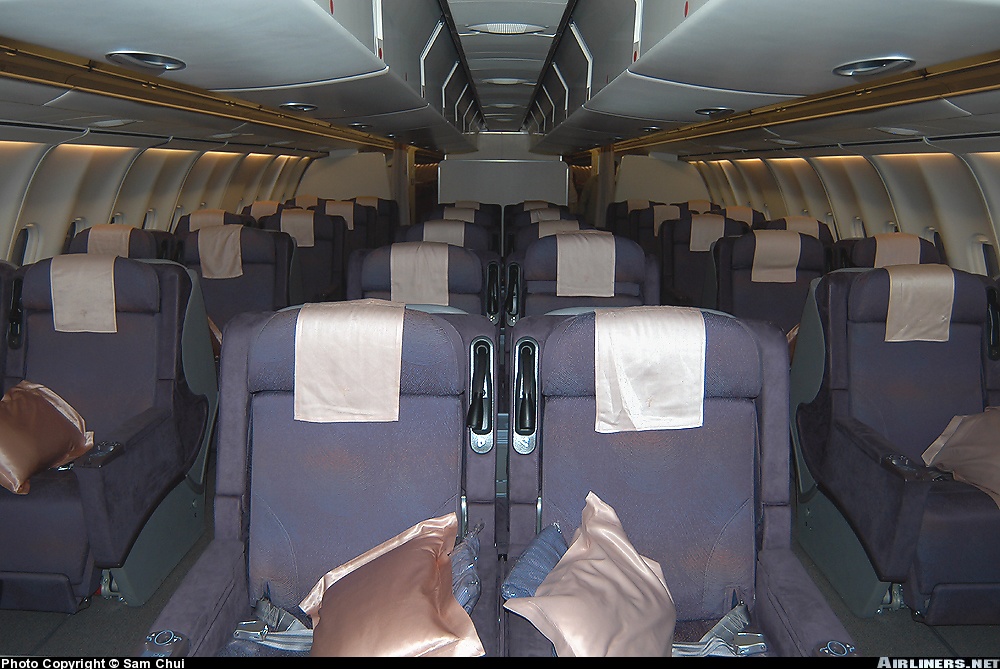

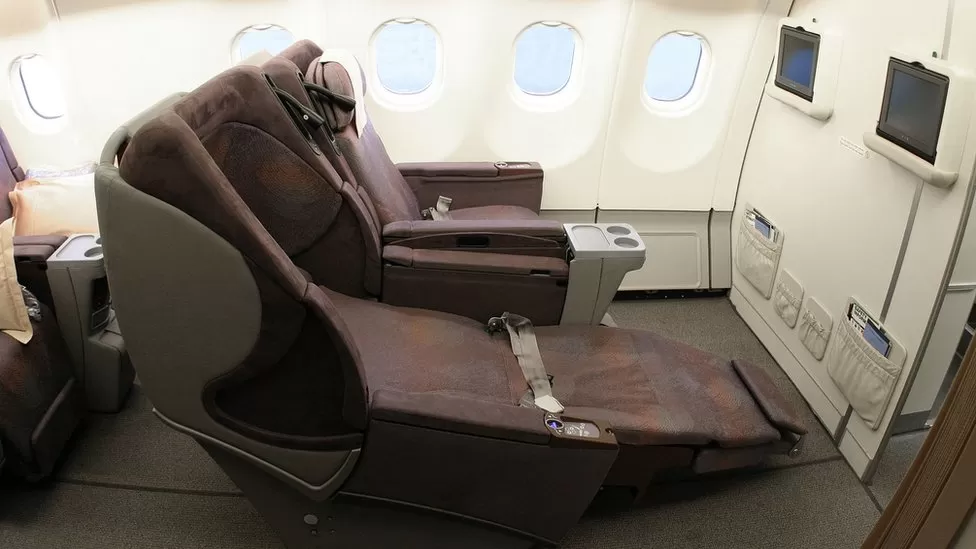
But at the back of the bus was something much more interesting: 117 Executive Economy Class seats, which were making their debut on this route. These offered additional seat pitch and width compared to SIA’s regular Economy Class seats, very much appreciated on this epic 16-18 hour journey.

While the SpaceBed was progressively replaced by a new lie-flat Business Class seat from 2006, it remained in the fleet all the way until 2017 when 9V-SVF was finally retired after a regional flight from Manila to Singapore.
Executive Economy, on the other hand, disappeared just four years. In 2008, SIA decided to convert the A345s into all-Business Class configurations and scrap Executive Economy altogether. The refits were done at a rapid pace, and by the time the 2009/09 annual report was published, all five A345s had been converted into 100-seater all-Business Class aircraft.

Why did SIA abandon Executive Economy so quickly, and why did they introduce it in the first place?
Here’s the story.
The A340-500 and the shrinking world

The SQ20 route may have been inaugurated in 2004, but its genesis was many years in the making.
In April 1997, Singapore became the first Asian country to ink an Open Skies Agreement (OSA) with the USA, which ended curbs on passenger and cargo services between the two countries.
“The signing of this agreement-represents an important step toward ending restrictions on aviation services in Asia. We look forward to entering into open-skies agreements with all nations in the Asia-Pacific region that share our goals of open markets and unfettered opportunities”
-US Transportation Secretary Rodney Slater
This was a hugely exciting development for SIA, which would no longer face any restrictions on the capacity or frequency of its flights to the USA.
However, there was one stumbling block: technology.
SIA’s existing aircraft simply did not have the capability to fly non-stop to the USA, which meant a stopover in an intermediate country. This required further approvals and horse-trading, and put SIA at a competitive disadvantage for connecting traffic. After all, why would regional passengers take a two-stop journey to the USA, when they could do one-stops with Cathay Pacific out of Hong Kong, or ANA/Japan Airlines out of Tokyo?
But then at the Paris Air Show in June 1997, Airbus unveiled plans for two new versions of its widebody A340 family: the -500 and -600 variants.
| ✈️ Airbus A340-500 vs 600 | ||
| -500 | -600 | |
| Overall Length | 67.9m | 75.4m |
| Wingspan | 63.5m | 63.5m |
| Height | 17.5m | 17.9m |
| Fuselage Width | 5.6m | 5.6m |
| Maximum Take-off | 380t | 380t |
| Maximum Landing | 246t | 265t |
| Fuel Capacity | 222,850 litres | 204,500 litres |
| Powerplant | Rolls-Royce Trent 553 | Rolls-Royce Trent 556 |
| Thrust | 53,000 lb | 56,000 lb |
| Capacity (three class) | 270-310 | 320-370 |
| Range (three class) | 16,670km | 14,450km |
| Source: Airbus |
||
It was the -500 variant that so titillated SIA, with its range comfortably beating out any other passenger airliner then in service. This would allow the airline to serve North American gateways like San Francisco and Los Angeles without intermediate stops, bypassing transits in Hong Kong and Taipei.
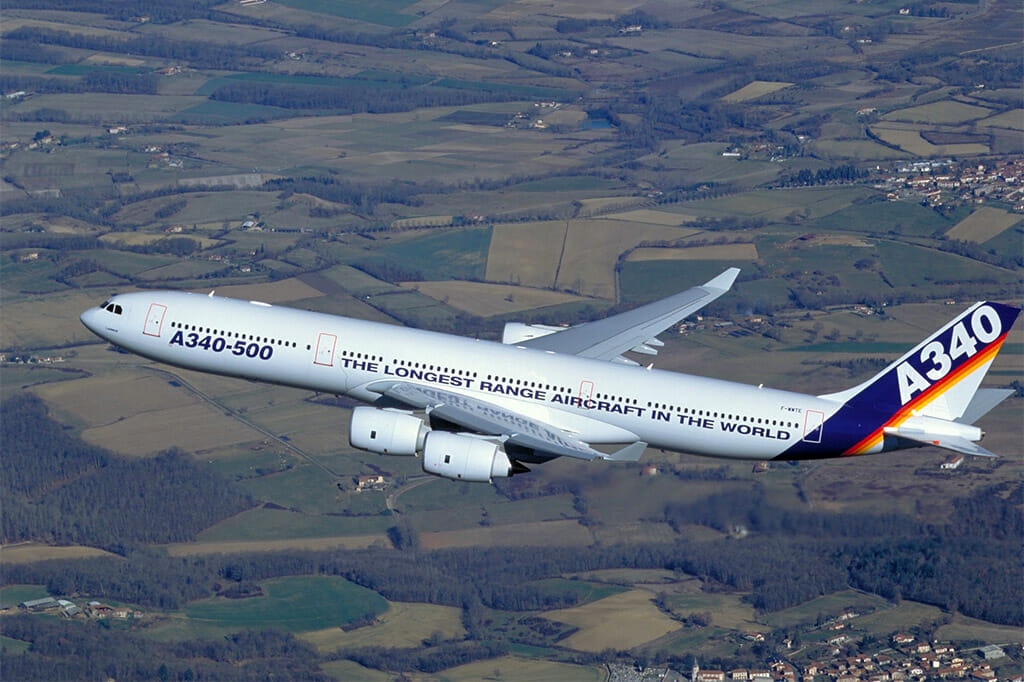
And while Boeing was hoping to woo SIA as the launch customer for its proposed B777-200X (which would fly 206 passengers up to 16,260 km), there were concerns that the twin-engine Boeing would face ETOPS restrictions which the four-engine Airbus would not.
In addition to considerations of price, range and other factors, people familiar with the negotiations said, this time concern about twinjet operations over extended Pacific Ocean routes helped sway Singapore Airlines’ management toward Airbus. Because they have only two engines, Boeing’s competing 777 designs are restricted from flying routes over water that take them farther than three hours from landing strips. Airbus’s A340, on the other hand, has four engines, which have no such restrictions.
…
But at least for Singapore, people close to the talks maintain, the issue of two-engine vs. four-engine planes was a threshold question. Airline officials are worried about possible delays and schedule disruptions if bad weather or other problems even temporarily preclude use of some currently available island landing strips, which would be within the three-hour limit.
So SIA placed an order for ten Airbus A340-500s in May 1998: five firm and five on a never-exercised option. They joined the fleet in 2004, with registration numbers 9V-SGA to 9V-SGE.
| Serial | Delivered | Post SQ Life |
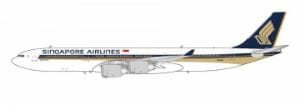 9V-SGA 9V-SGA |
Jan 2004 |
|
 9V-SGB 9V-SGB |
Jan 2004 |
|
 9V-SGC 9V-SGC |
Jan 2004 |
|
 9V-SGD 9V-SGD |
Apr 2004 |
|
 9V-SGE 9V-SGE |
May 2004 |
|
| 💡 Fun Fact |
| The 9V-SGA, B, C, D and E registrations live on in the SQ fleet today. These, rather aptly, have been given to the A350-900ULR jets that now serve the non-stop flights to Los Angeles, San Francisco, New York and Newark |
Media reports mentioned that the 313-seater aircraft were configured with only 181 seats, “for the seating comfort of passengers”, but in reality, the reasons were far less altruistic.
Even though the range of the -500 was significant for its day, there were still limitations. Airbus had added new fuel tanks and stretched the fuselage and wings, allowing the -500 to carry 50% more fuel than the -300, but it still wouldn’t be able to take 313 passengers all the way from Singapore to the United States.
Something had to give, and since it wouldn’t make sense to cut the highly-profitable Business Class cabin, Economy Class needed a dramatic rethink.
The Executive Economy solution

How do you reduce the weight of an aircraft? Well, you start by losing seats.
Instead of a traditional Economy Class section, SIA introduced Executive Economy, a brand new cabin product exclusively on the A340-500.
Exclusive to this aircraft, SIA’s new Executive Economy Class seats 117 in a 2-3-2 configuration, with a longer Economy Class seat pitch of 37 inches, a seat width of 20 inches and a seat back recline of eight inches. It also features an adjustable leather headrest, an innovative leg-and footrest, and a nine-inch personal video monitor. In addition, one in every two seats is equipped with an AC power supply outlet
-Singapore Airlines
These 117 seats offered an elevated experience (and price tag) over traditional Economy, with additional legroom and recline, an adjustable leather headrest, a bigger IFE screen, in-seat AC power and small quality-of-life improvements like a coat hook and storage compartment.
| Executive Economy | Regular Economy | |
| Layout | 2-3-2 | 3-3-3 |
| Width | 20″ | 17″ |
| Seat Pitch | 37″ | 32″ |
| Recline | 8″ | 6″ |
| IFE Screen | 9″ | 6″ |
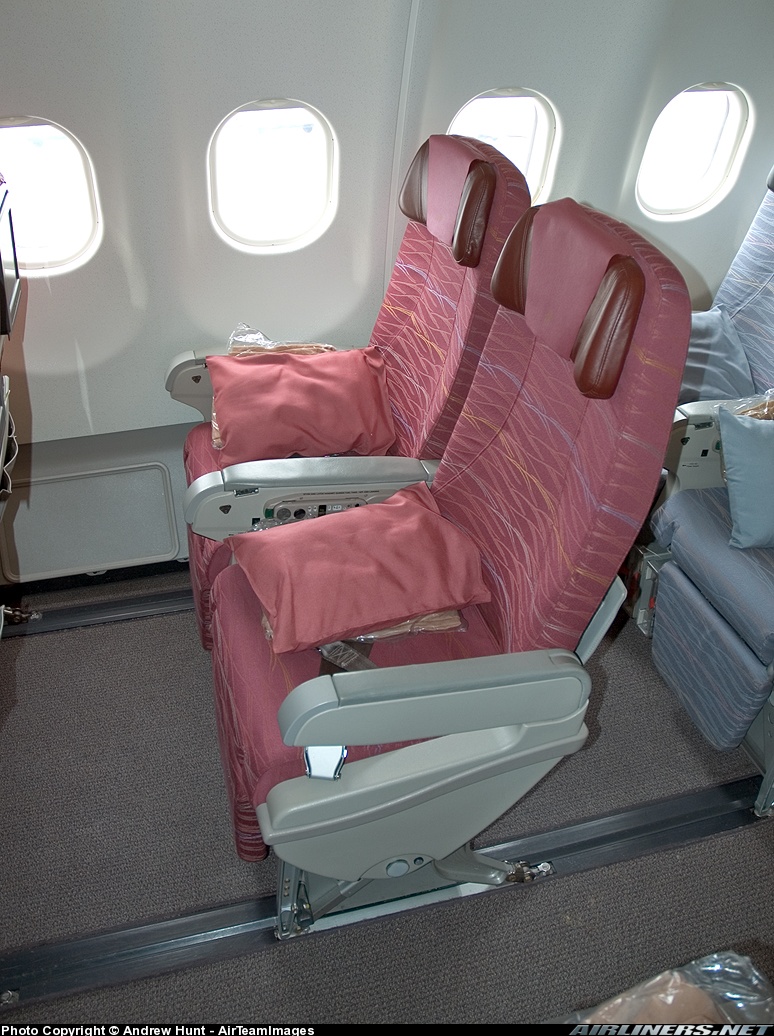
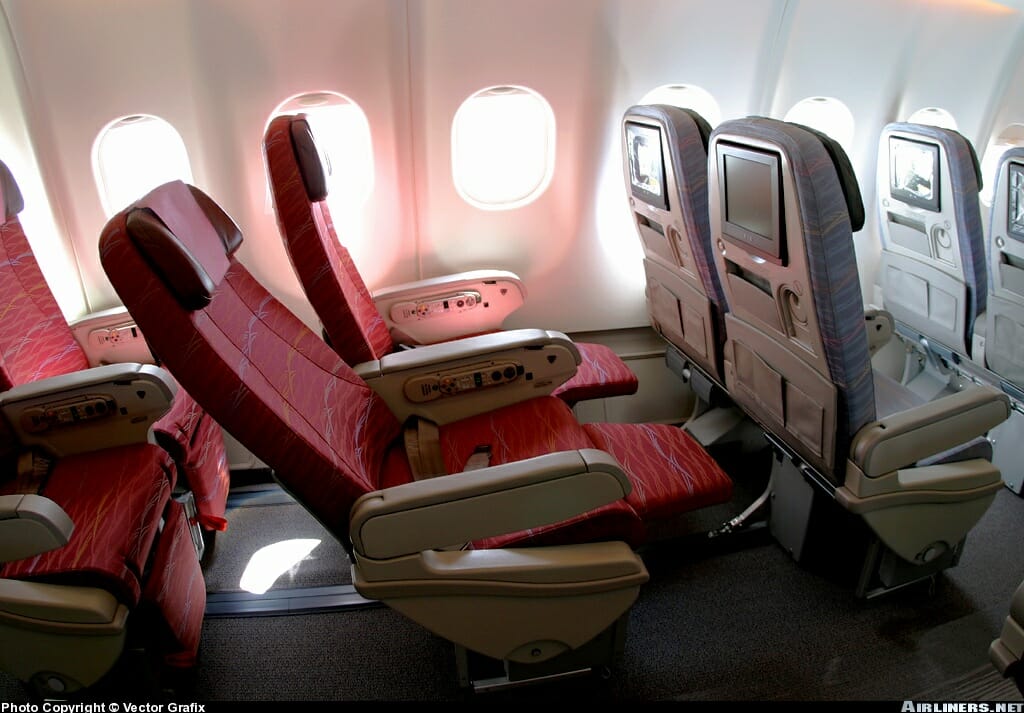
Executive Economy was split into two cabins: a forward mini-cabin with 21 seats, and a rear cabin with 96.
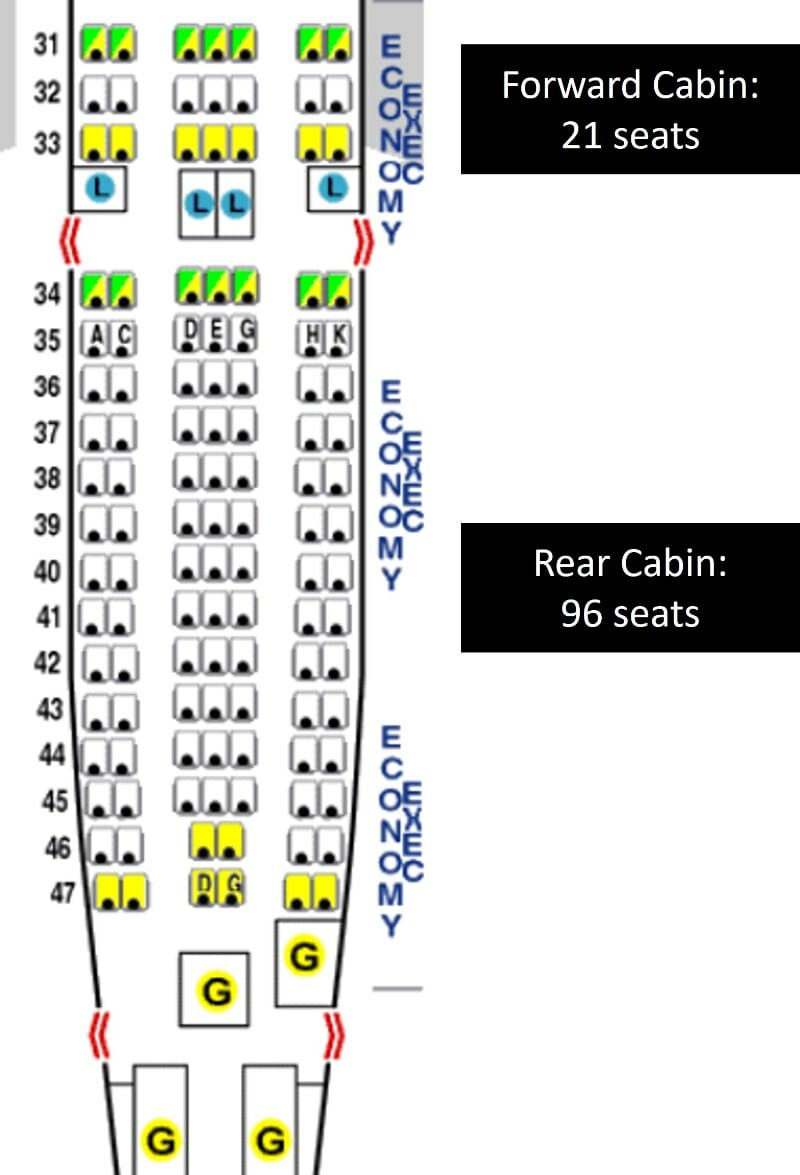
The forward cabin was the preferred option for most travellers, since the lack of bassinets and reduced size almost made it feel like a mini-cabin unto itself. There was also the obvious benefit of disembarking from the aircraft earlier than the rest of Executive Economy. After a 17-hour flight, no one wants to be last in line at US immigration!
To make the time pass faster, passengers could distract themselves with more than 250 on-demand entertainment options, including 29 movies (later increased to 60), 77 TV shows, 102 music albums, 12 music channels and 33 Nintendo games. These were displayed on a 9″ IFE screen, which though paltry by modern standards, was 50% larger than Economy Class seats of the time.
There were also other flourishes which separated Executive Economy from regular Economy. Executive Economy passengers received Piper Heidsieck champagne, which they could enjoy at a stand-up bar to the rear of the cabin with snacks and magazines. This proved to be so popular that Business Class passengers would often venture to the “bad part of town” just to mingle, stretch, and enjoy a cocktail.
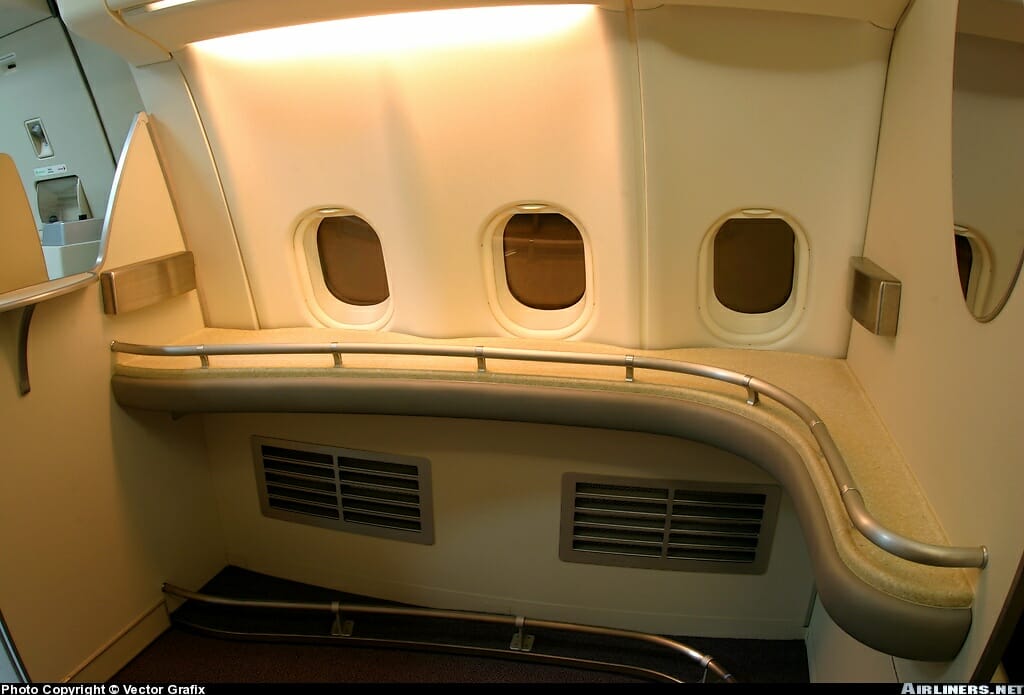
When it came to meal service, Executive Economy passengers received printed menus (though this was the era were they were standard for all passengers, even in Economy). The standard of catering was a cut above regular Economy, with specially created dishes by SIA’s International Culinary Panel.

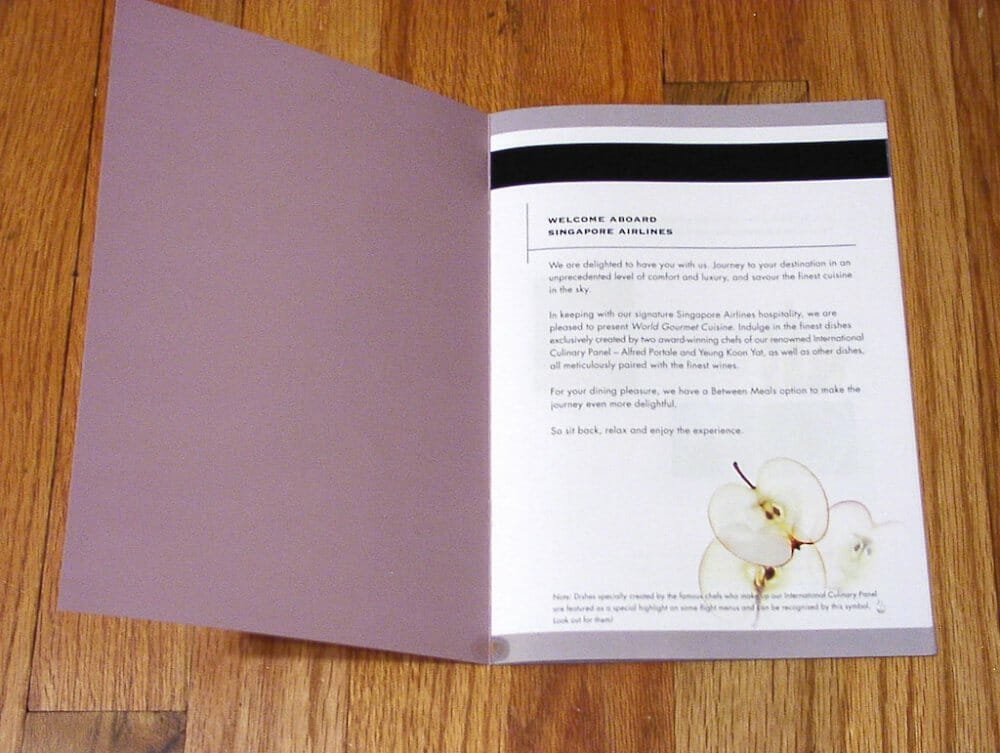
| 🍽️ Executive Economy Menu |
|
Supper Ham with mesclun salad and mustard sauce, chicken Chicken in natural jus with potato puree, sauerkraut with bacon and pear Cheese and crackers Ice Cream bar Roll and butter Breakfast Fresh fruits with champagne syrup Fruit yoghurt Ah Yat’s braised beef brisket in live spice with Chinese greens and egg noodles Assorted breakfast rolls, butter and fruit preserve |
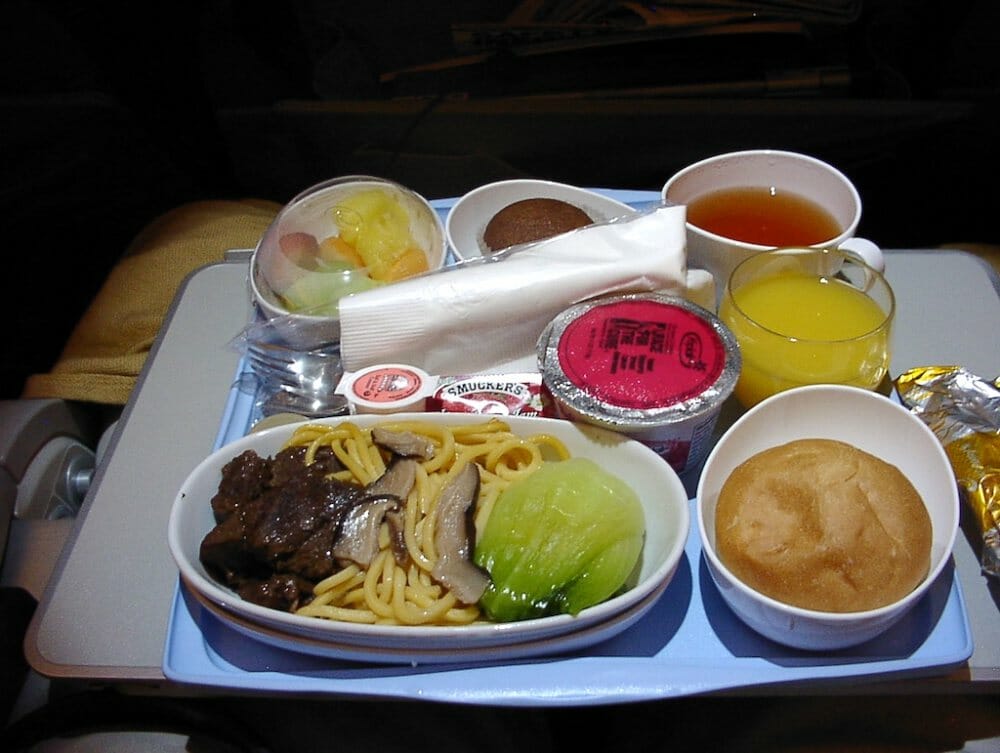
After their meal, passengers could freshen up in the lavatories and take in some views, because two of them came with windows installed- something quite novel for the time.
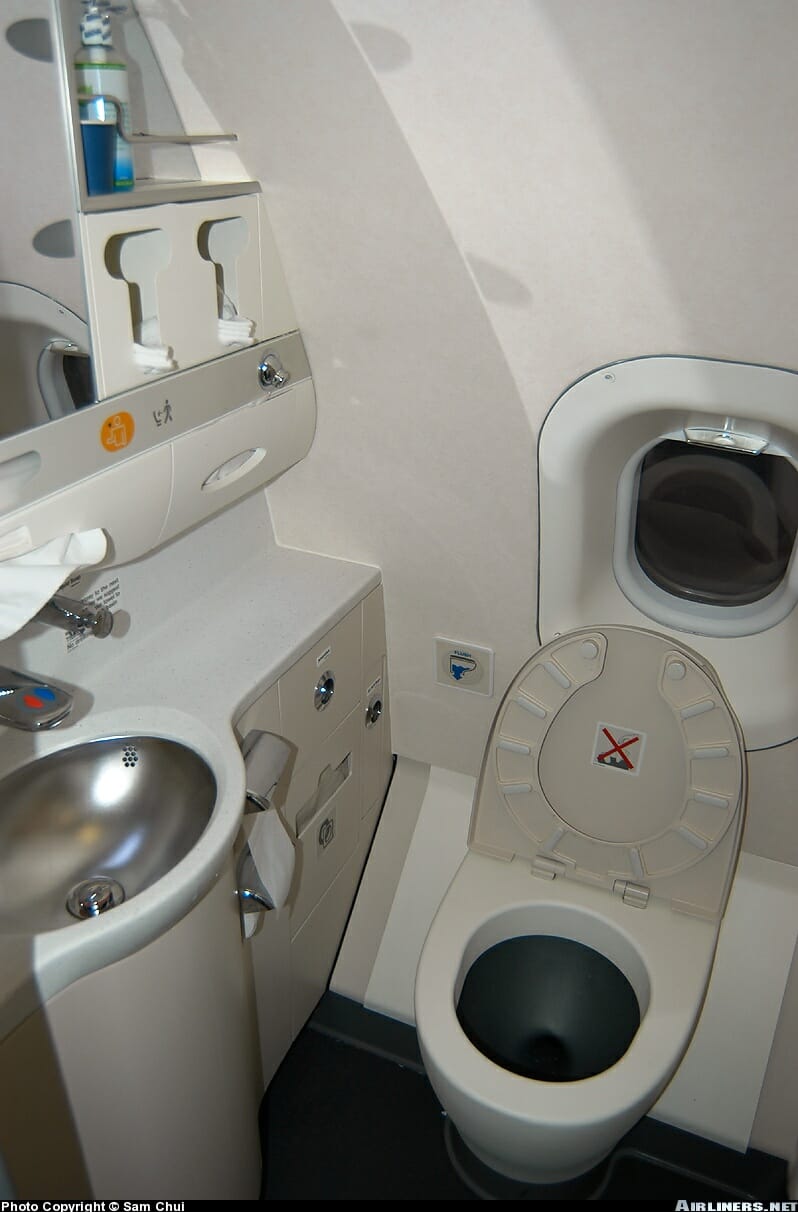
Another interesting quirk about the A340-500 was that it was the only aircraft (and remains the only aircraft to this day, as far as I know) to have a corpse locker installed, since the aircraft’s overwater routes presented few opportunities for an unscheduled landing.
“On the rare occasion when a passenger passes away during a flight the crew do all that is possible to manage the situation with sensitivity and respect.
Unfortunately given the space constraints in an aircraft cabin, it is not always possible to find a row of seats where the deceased passenger can be placed and covered in a dignified manner, although this is always the preferred option.
The compartment will be used only if no suitable space can be found elsewhere in the cabin.”
-SIA Spokesperson
This feature, thankfully, was never used.
Why was Executive Economy canned?
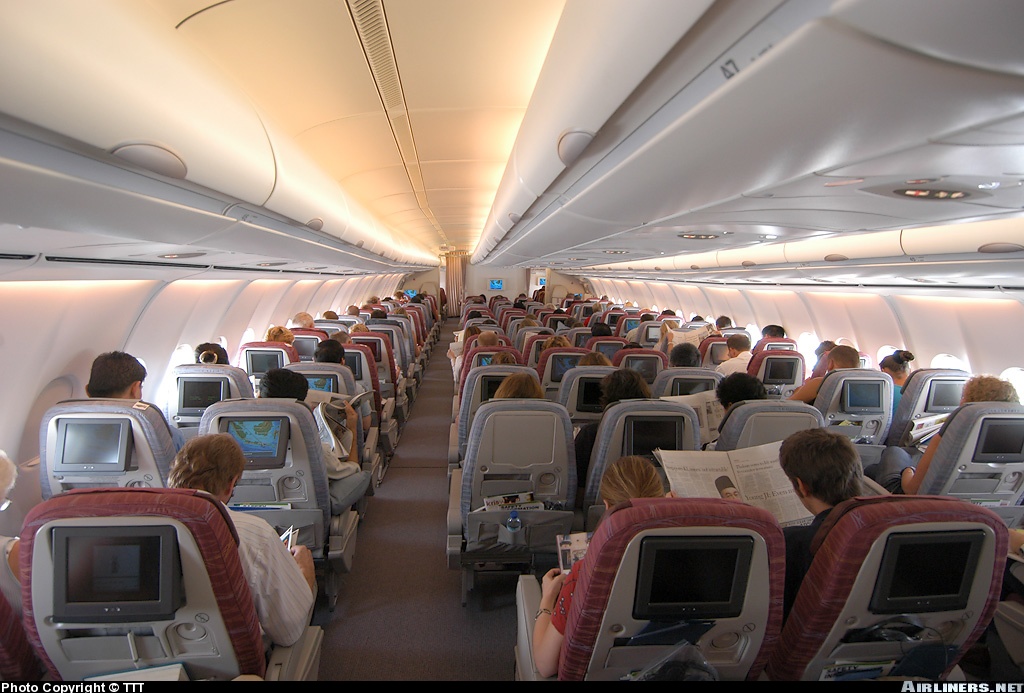
From what I can gather, reviews for Executive Economy were overwhelmingly positive.
Passengers loved the “Business Lite” touches like champagne, in-seat power, larger IFE screens, and the bar. The additional pitch meant less cramping and easier entry/egress from seats, even when the passenger in front was fully reclined. The seats themselves showed thoughtful design, like how the tray table was stowed in the armrest, which meant the passenger in front could snooze through a meal service without having to reset his seat to full upright for the passenger behind who wanted to dine.
What’s more, the A340-500s weren’t always flying the US routes. Inbetween turns, they’d also serve regional destinations, so passengers to Bali or Jakarta would sometimes enjoy an unexpected upgrade (without the champagne, of course- the service provided would be standard Economy).
But rumours started circulating in late 2007 that Singapore Airlines was planning to eliminate Executive Economy altogether, and indeed in 2008 the airline decided to refit the A340-500s to all-Business Class configurations.
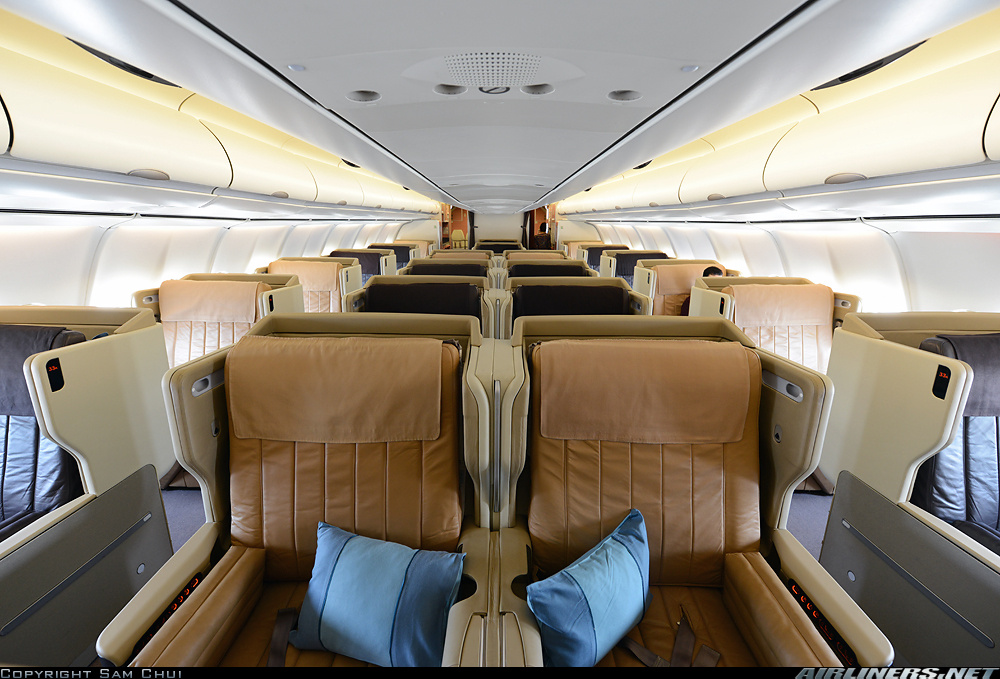
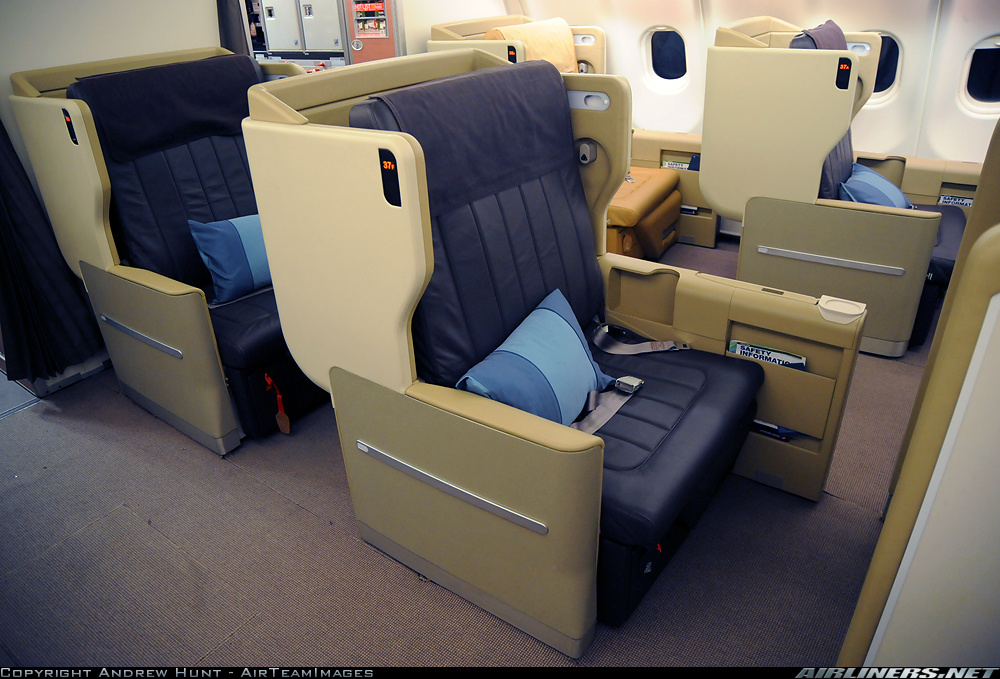
The 64 SpaceBed seats were replaced with 100 of the (then) newly-launched 2006 Business Class seats. These were obviously a massive upgrade, offering a full flat bed with improved privacy, width, storage space, and all-aisle access. However, it also meant that those unwilling to pay the eye-watering prices of Business Class were once again relegated to one-stop connectivity to the USA.
Why did SIA give up on Executive Economy so soon? Well, it never intended to have a product like this in the first place, but for the unique constraints imposed by the non-stop flights to the USA. In fact, it’s quite telling that when the first A380 was delivered in October 2007, it came in a three-cabin configuration with nothing between Economy and Business.
Also, it could have been that Executive Economy was a little too good, and people who would otherwise splash out S$7,000+ for Business Class seats were now starting to downgrade (or get downgraded by their companies). Whatever the reasons, Business Class was simply the higher-yielding product, and the price tag of Executive Economy did not justify the real estate it occupied.
The all-Business Class A345s continued to fly the non-stop USA routes all the way till 2013, when the flights were axed as rising fuel costs made them no longer sustainable. The A340-500 burned a frightening eight tons of fuel per hour (versus 5.8 tons for the modern-day A350-900 ULR), not helped by the fact you had to carry an unusually large amount of fuel for this flight, which further increased the burn rate.
Airbus agreed to buy back the five A340-500s as part of a US$7.5 billion deal that saw SIA ordering five more A380s and 20 A350s, eager to avoid a repeat of the situation in 1999 when Boeing bought SIA’s 17 A340-300s as part of a deal to sell the carrier 34 B777s!
Spiritual successor
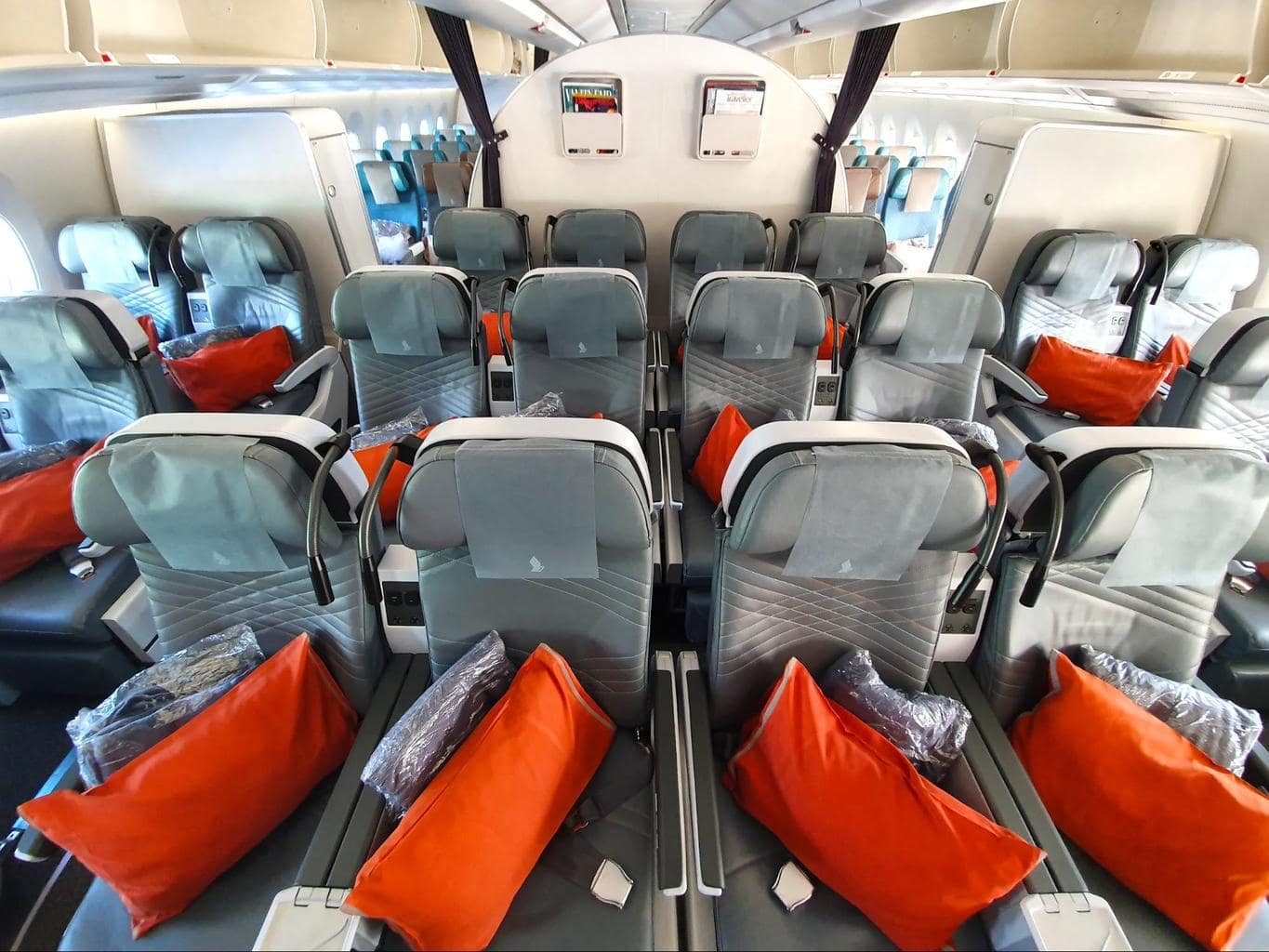
Even though Executive Economy was the forerunner of modern day Premium Economy, Singapore Airlines would not introduce the product until 2015.
While there are obvious cosmetic and technological differences between the two (most notably the use of leather for seats instead of cloth), it’s interesting that Executive Economy could certainly hold its own when it came to personal space.
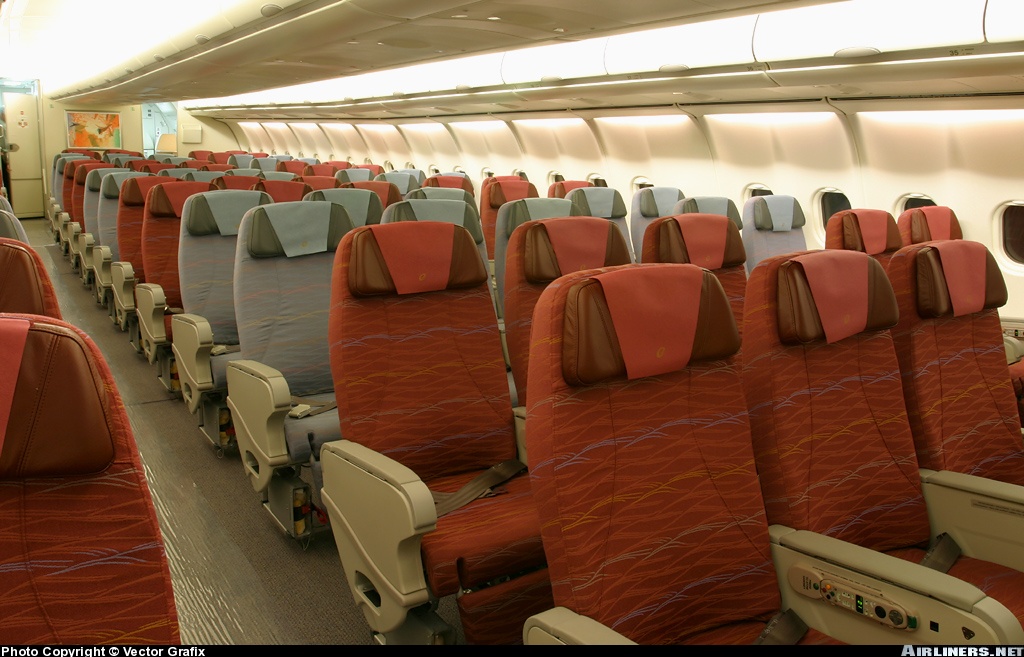 |
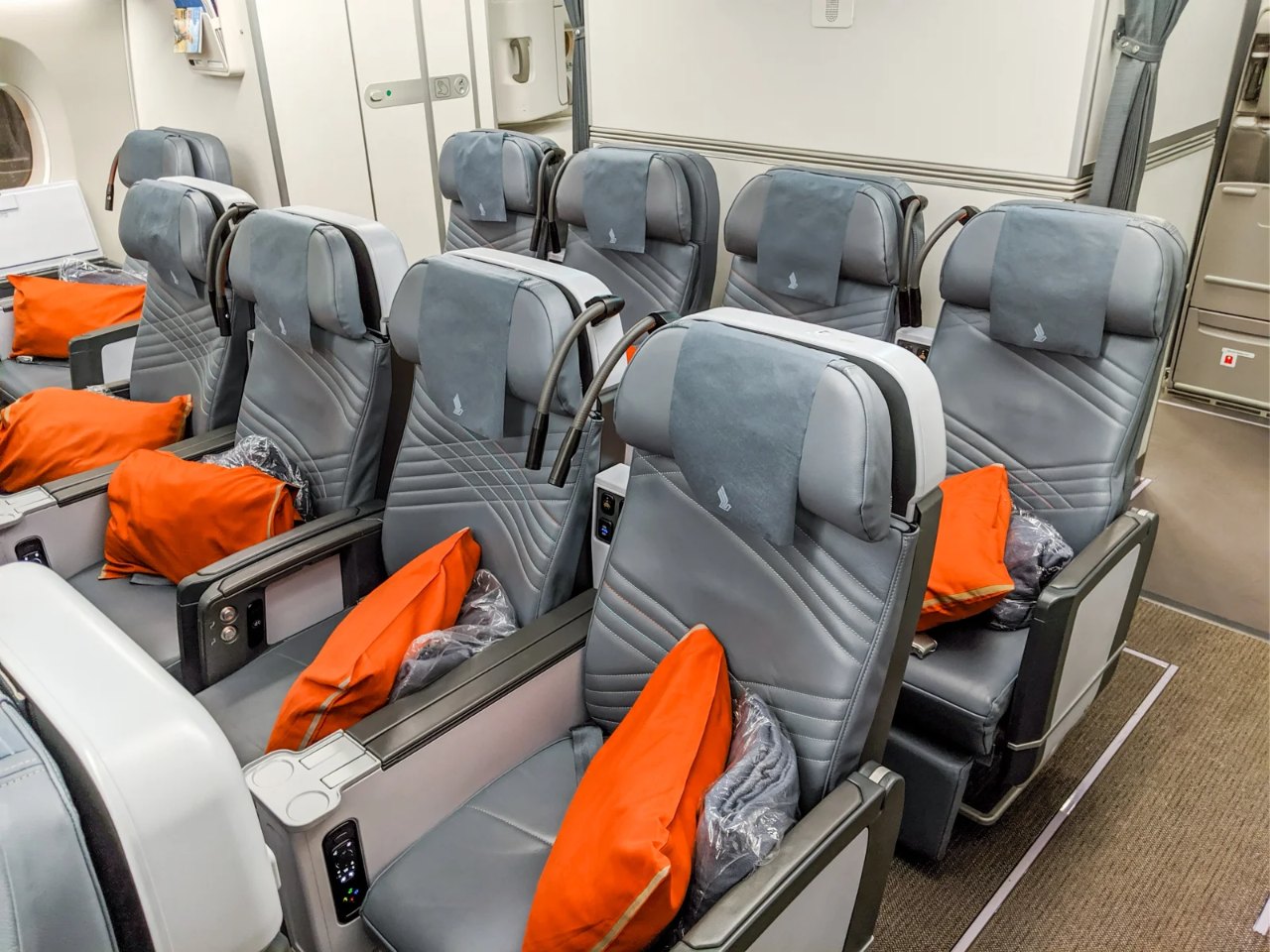 |
|
| Executive Economy | Premium Economy | |
| Introduced | 2004 | 2015 |
| Layout | 2-3-2 | 2-4-2 |
| Seat Pitch | 37″ | 38″ |
| Seat Width | 20″ | 18.5-19.5″ |
| Seat Recline | 8″ | 8″ |
| IFE Display | 9.3″ SD | 13.3″ HD |
| A/C Power | 2 pax: 1 plug | 1 pax: 1 plug |
So what changed between then and now? Competition, really. While Premium Economy was still something of a niche cabin in the mid-2000s, most major airlines began offering it in the next decade, including regional rival Cathay Pacific in 2012.
Also, the Gulf carriers were starting to chip away at Economy Class pricing, offering cheaper one-stop fares for cost-conscious travellers. SIA needed a way to make Economy Class real estate more profitable, and Premium Economy was an opportunity to capture the segment of travellers wanting more comfort, but unwilling to pay the wallet-bursting prices of Business Class.
Unlike the short-lived Executive Economy, Premium Economy is clearly here to stay. It’s already a fixture on all long-haul flights, and will certainly be included when the long-delayed B777X finally arrives (though perhaps with a redesign?). The main question on my mind these days isn’t the viability of the product; it’s how long it’ll take for Business Class innovations to diffuse to Premium Economy. After all, Business Class today is First Class 20 years ago, and Premium Economy today is Business Class 20 years ago. Could an angled-flat Premium Economy seat be somewhere in the near future?
Watch this space.
Conclusion
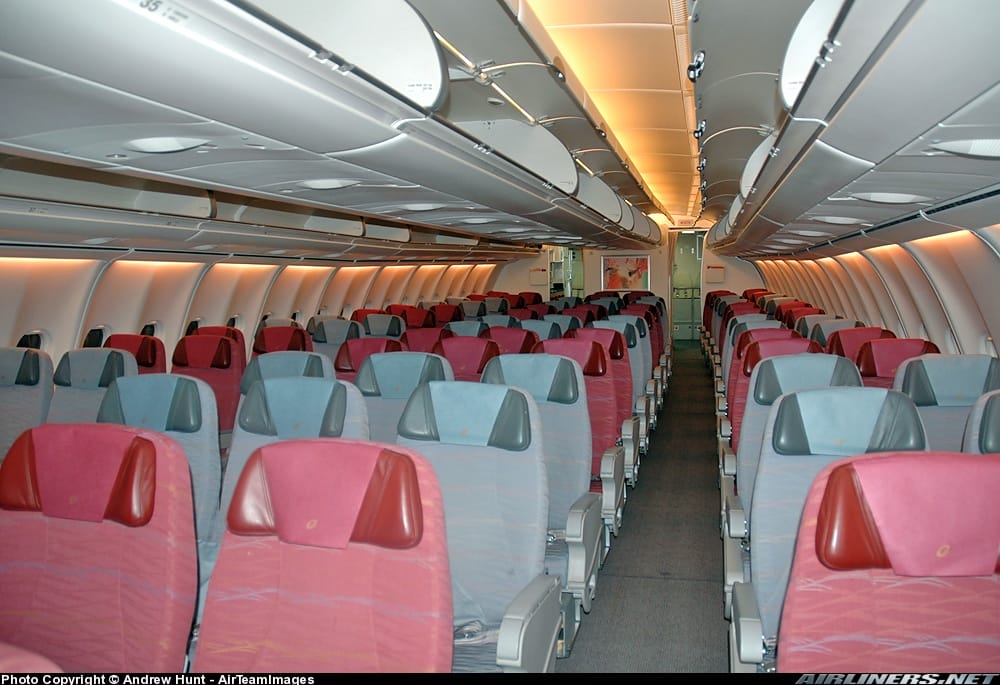
Singapore Airlines’ Executive Economy cabin was an idea ahead of its time, and even though it lasted just four years, its legacy lives on in the form of today’s Premium Economy cabin.
I never got to experience this myself, but by all reports it sounds like a pleasant-enough experience, insofar as 16-18 hours seated upright can be.
Did you ever fly Executive Economy on the A340-500 before? What was it like?





Fond memories of this product – took it 4times a year SN-EWR when I was a university student in New York. Started my love of flying and aviation!
Isn’t it 2-4-2 for a340 economy?
Flew this many times to LAX. Row 31 had ridiculous amounts of legroom. But seat padding was average and the leg rest was useless. I’d say its on par with the current premium economy seat in terms of comfort.